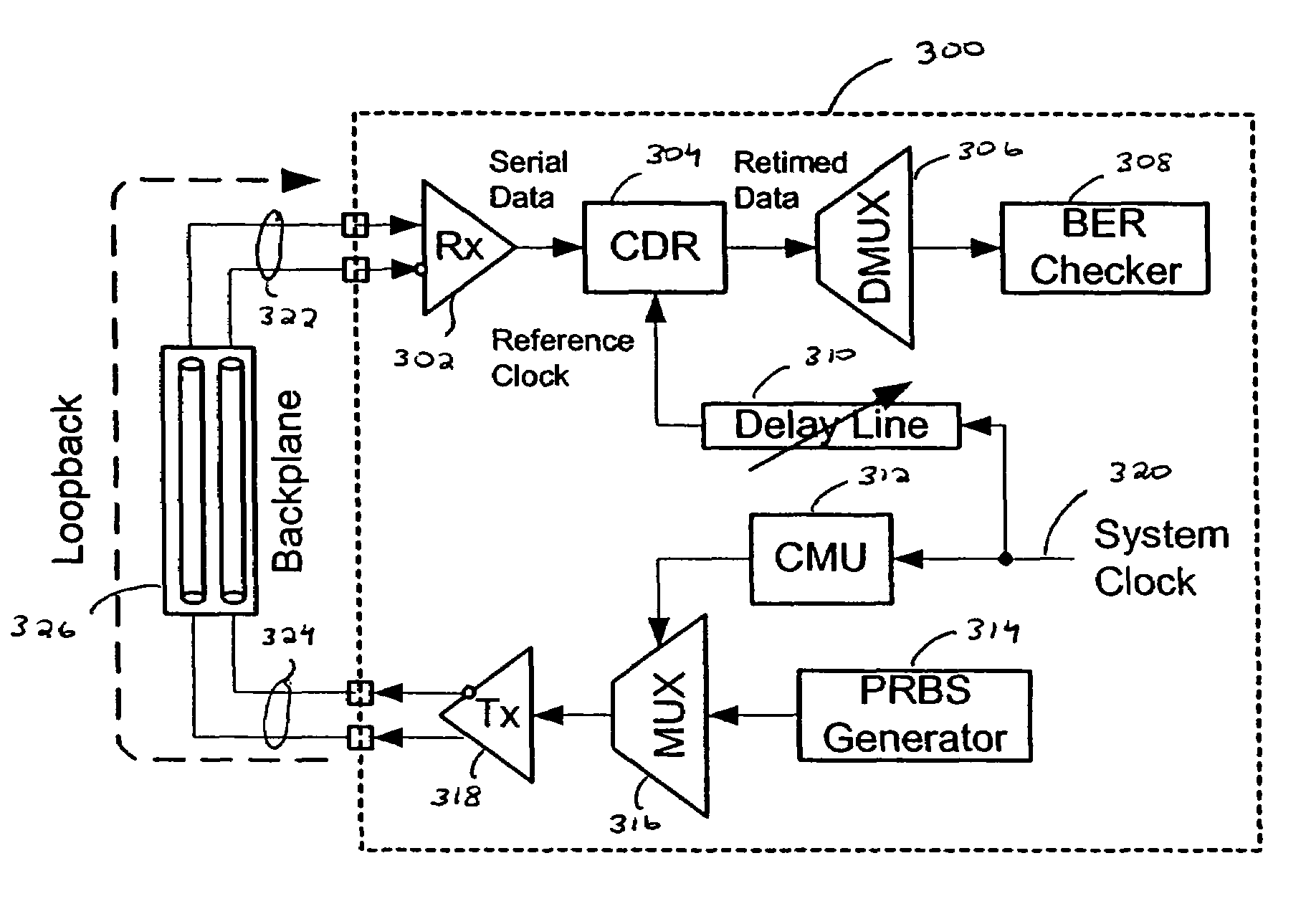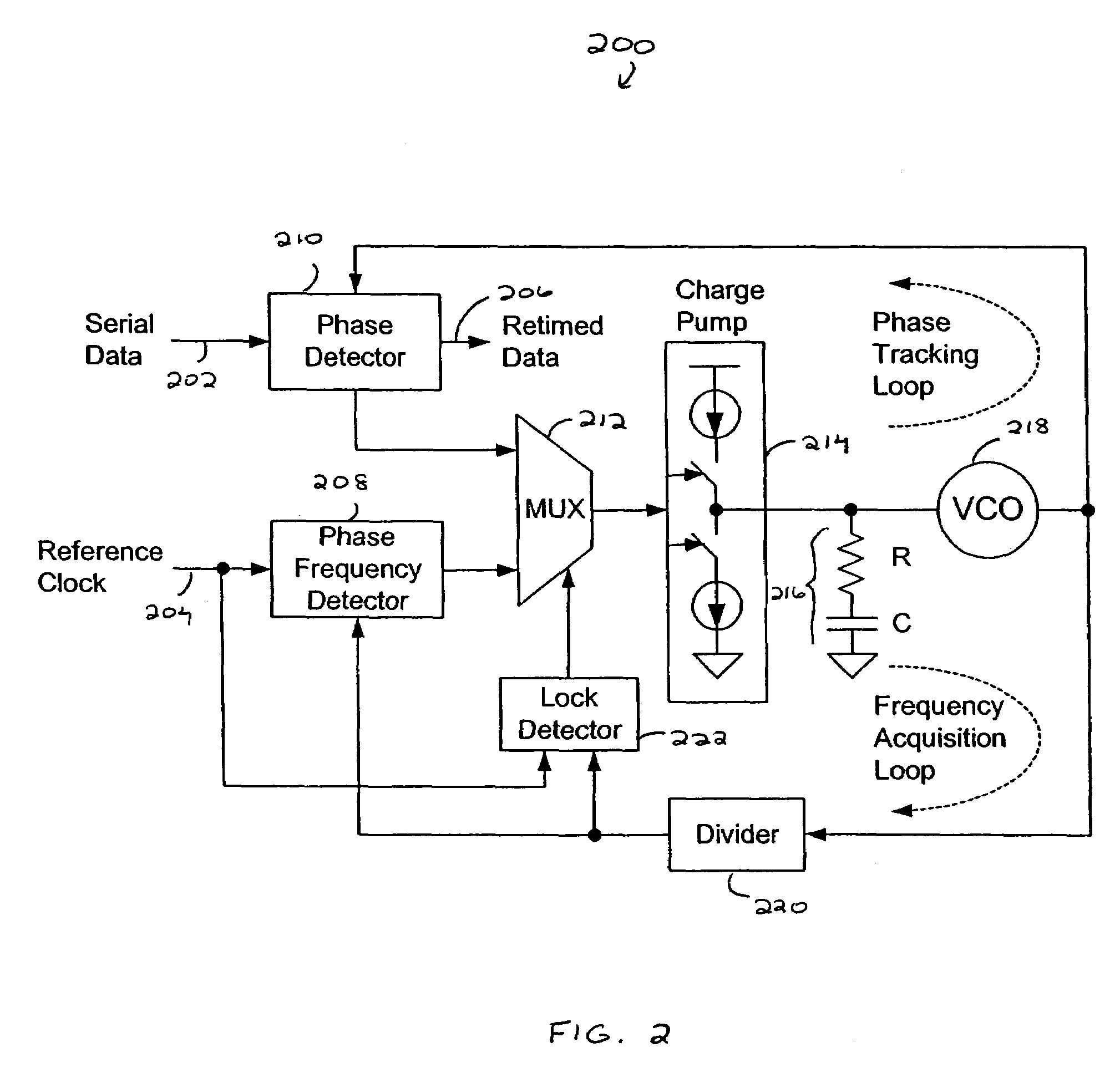Built-in at-speed bit error ratio tester
a bit error ratio and tester technology, applied in the field of bit error ratio testers, can solve the problems of reducing the overall data transfer rate, inefficient high throughput rates of some devices, and reducing the bit error ratio, so as to facilitate jitter analysis and evaluation
- Summary
- Abstract
- Description
- Claims
- Application Information
AI Technical Summary
Benefits of technology
Problems solved by technology
Method used
Image
Examples
Embodiment Construction
[0021]A bit error ratio tester (BERT) is used to construct a bathtub curve (i.e., a BERT scan). The bathtub curve is a plot of the bit error ratio versus sampling time that is generated by stepping a sampling point across a data eye. The bathtub curve is useful for determining jitter and eye opening for high speed serial links. A receiver ideally samples the eye at the center where the overlap of the transition histograms (i.e., bit error ratio) is small. Data jitter will move the transition edges toward the center of the eye diagram, resulting in eye closure. As the sampling point is continually moved into the edges of the eye, the bit error ratio will steadily increase. The total jitter and eye opening at a specified bit error ratio is readily available from the bathtub curve. Jitter includes random jitter and deterministic jitter. The random jitter determines the slope of the bathtub curve while the deterministic jitter determines the inset of the slope from the edges of the bath...
PUM
 Login to View More
Login to View More Abstract
Description
Claims
Application Information
 Login to View More
Login to View More - R&D
- Intellectual Property
- Life Sciences
- Materials
- Tech Scout
- Unparalleled Data Quality
- Higher Quality Content
- 60% Fewer Hallucinations
Browse by: Latest US Patents, China's latest patents, Technical Efficacy Thesaurus, Application Domain, Technology Topic, Popular Technical Reports.
© 2025 PatSnap. All rights reserved.Legal|Privacy policy|Modern Slavery Act Transparency Statement|Sitemap|About US| Contact US: help@patsnap.com



